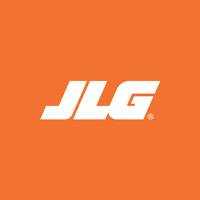 JLG Industries, Inc.
JLG Industries, Inc.
World-leading access equipment manufacturer
____
McConnellsburg, PA
Telehandler attachments are recognized globally under a variety of names: work tool, implement and accessory, just to name a few. Like doctors’ instruments, they all provide an intended purpose.
The surgeon must decide if he is to use a clamp, scalpel, retractor or forceps based on the type of work to be performed. He may also determine which size or variation to use depending on the situation and what provides the most efficient and safest method. Telehandler users must also understand the application and the attachments that are available to accomplish the work.
Do they want to pick or place a load, scoop loose material, suspend a load, grapple loose material or pipe? Each of these applications will determine the correct attachment type and size that should be utilized.
Attachments can be placed into the following categories: carriages, buckets, truss booms/lift hooks and specialty. Without completely understanding the machine’s capabilities and how attachments can assist, an inefficient and unsafe workplace environment will exist.
Carriages
Carriages are by far the most popular attachment in use on telehandlers. They perform numerous tasks and vary in width and functionality. If the customer wants to transport or place a load with no special features, they can choose a standard carriage. With added features, the carriage can perform and provide positioning of the load to suit the end users’ needs.
- Side tilt carriage: Can position the load properly for transport across uneven terrain and can also pick or place loads that are not on a level surface
- Side swing carriage: Provides offset placement of the load in angles from 50° to 90° each side from center. This is useful when the machine is unable to provide a direct path to the load due to working in tight spaces.
- Fork positioning carriage: Provides a powered means to situate the forks at the correct spread for palletized loads, without the operator leaving the cab
- Side shifting carriage: Will shift the entire carriage and fork either direction. This is useful if positioning the machine side-to-side is not possible when picking up a load or if lateral placement of the load is necessary.
Buckets
Buckets are generally used for loading loose material. All buckets are intended for non-excavating applications.
- Non-powered general-purpose bucket: Can be used for loading dirt, mulch, gravel or any other bulk material
- Powered grapple bucket: Helpful for non-uniform loads that are awkward to capture in the bucket without use of the grapple arms. This is helpful to maintain the load in the bucket while transporting and disposing the contents.
- Multi-purpose bucket: Can accomplish many applications. With its split bucket design, it can be used for loading, carrying and dumping; as a grapple for handling odd-shaped objects; or for dozing, leveling and spreading material with the clamshell open.
Truss Booms/Lift Hooks
Truss booms can provide a multitude of solutions for the job site. They can expand the use of the vehicle by providing increased reach and sometimes increased height of the suspended load. Various lengths are available from the simple boom-mounted lift hook to the extreme distance of a 15-ft truss boom. Most come in fixed lengths, but adjustable truss booms are also available, which vary the reach of the load. Additional variations of coupler or fork-mounted truss booms and hooks expand the options available to the customer. If there is an application that would prevent the operator from up and down boom movement, some truss booms are equipped with a winch. This allows the operator to raise and lower the suspended load in a linear direction and into tight spots.
Specialty Attachments
The number of specialty attachments can be endless, depending on the work site application. Some of the more popular work tools used today include fork-mounted work platforms, pipe grapples, sweepers, augers and trash hoppers.
Some of the more popular work tools used today include fork-mounted work platforms, pipe grapples, sweepers, augers and trash hoppers.
The fork-mounted work platform can be installed on a carriage and used to lift personnel for various hands-on type of work at heights. Pipe grapples are popular in the oil and gas industry for grappling and transporting pipe and poles of great lengths. Sweepers can be useful for job site cleanup and can also collect the debris into a hopper for disposal.
If the operator needs to “punch” some holes for posts or poles, an auger would be the ideal implement. The auger bit can come in diameters ranging from 6” up to 36”. Fork-mounted trash hoppers are a useful product available for telehandlers. Equipped with a feature that allows the operator to empty the hopper’s contents without leaving the comfort of the telehandler cab, this accessory is a valuable addition in keeping worksites clean and safe.
In summary, telehandler attachments can offer many solutions for the end user. From picking and placing palletized loads to bucket work and suspending loads, the wide array of available attachments lends telehandlers to countless tasks across many industries. What is key to effective and efficient utilization of the telehandler is to know the right tool for the job.
Learn more about enhancing the versatility and performance of your telehandler and explore our full range of telehandler attachments.